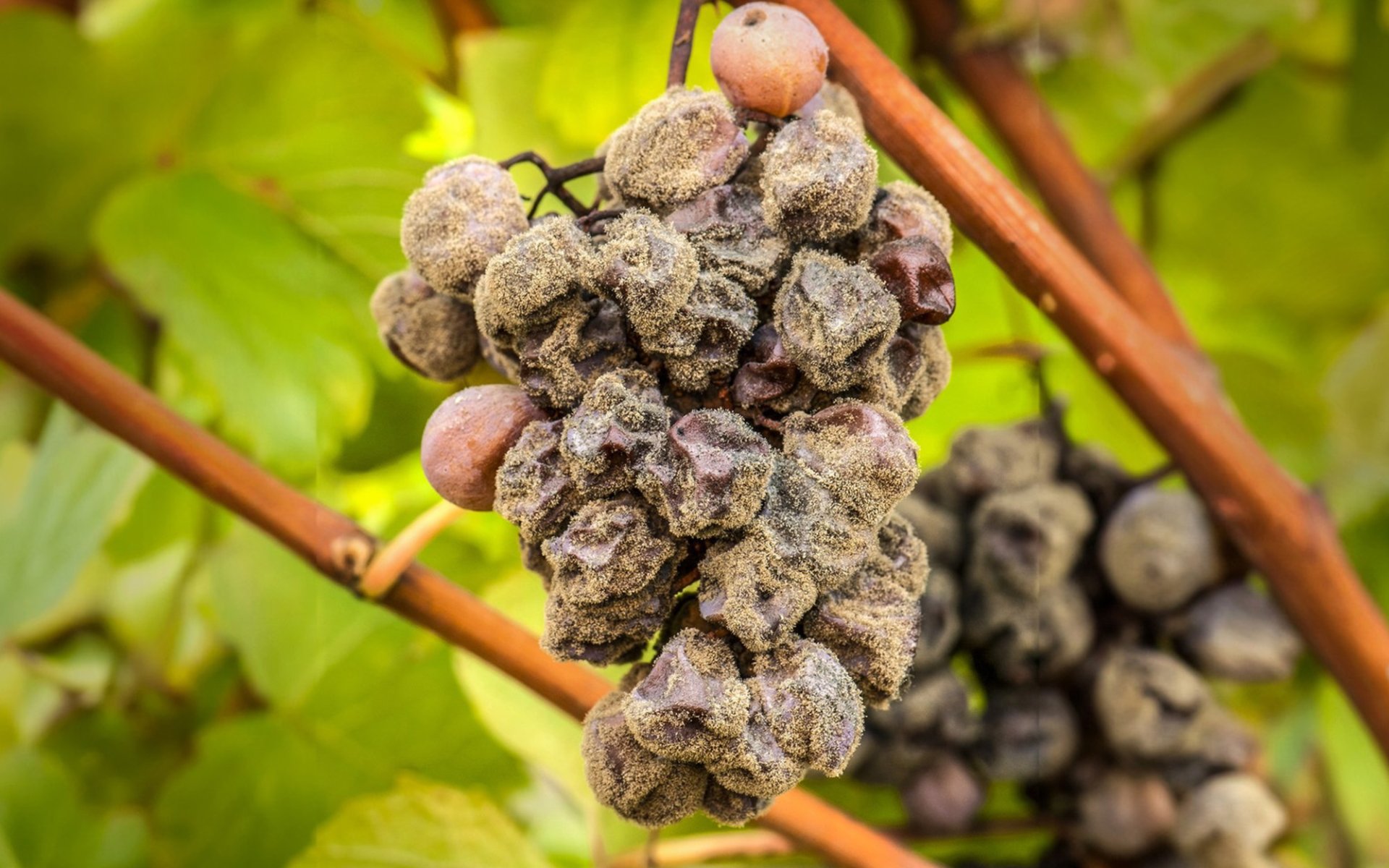Noble Rot

Wine is a beverage with a long history, rich in artistry and innovation. Among the many captivating stories in the world of wine, Noble Rot stands out as a fascinating phenomenon that offers a truly enchanting experience to wine enthusiasts.
Understanding Noble Rot and Its Magic
Noble Rot, or scientifically Botrytis cinerea, is a type of fungus that affects grape bunches, causing the grapes to dehydrate and shrivel, resembling raisins. However, crucially, they retain a highly concentrated amount of sugars and flavors. Winemakers need several times the usual quantity of Noble Rot-affected grapes to produce the same volume of wine as normal grapes.
Initially, this fungus was not desired in the world of wine and was often seen as a detrimental pest. However, its unique properties were later discovered: when grapes affected by this fungus are used to make wine, the resulting wine acquires a complex sweet flavor and distinctive aromatic qualities. This occurs because the fungus pierces the grape skins, allowing water to evaporate, leaving behind concentrated sugars and flavor compounds.
Origins of Noble Rot Sweet Wine in Hungary and France
The discovery of using Noble Rot-affected grapes to produce sweet wine is believed to have first occurred in the Tokaj region of Hungary, with experimental production beginning as early as 1576 before official production standards were established in 1730.
In Hungary, the renowned production area for Noble Rot sweet wines remains Tokaj, a small district comprising 28 villages. These villages collectively boast approximately 33,750 rai of vineyards, which UNESCO declared a World Heritage Site in 2002 under the name Tokaj Wine Region Historic Cultural Landscape.
However, over time, Noble Rot gained wider recognition in the wine world, especially for the production of sweet wines in France and Germany. In France, a famous sweet wine region is Sauternes, part of the Bordeaux wine region.
From this region comes the exceptional sweet wine from Château dYquem 1787, a supreme wine made from a blend of Sémillon and Sauvignon Blanc grapes affected by Noble Rot. This wine once held the Guinness World Record for the most valuable, rare, and expensive white wine in the world, fetching $90,000 in 2006.
Germany also produces renowned sweet wines, particularly in the Mosel and Rheingau regions. Famous among these are Late Harvest wines, produced using Riesling grapes harvested later than usual to ensure they are overripe and have also undergone the Noble Rot process.
The Allure and Limitations of Noble Rot
The allure of Noble Rot lies in its ability to transform grapes, concentrating their sugars and flavors. However, this fungus can only thrive under very specific climatic conditions: an environment characterized by morning fog providing humidity, followed by bright sunshine later in the day. If the weather is too wet, especially during rainfall, the fungus cannot develop properly and may instead cause the grapes in the vineyard to simply rot.
Therefore, cultivating grapes with Noble Rot is not easy, as it requires precise environmental conditions. A combination of humidity (for fungal growth) and dryness (to halt fungal growth and promote water evaporation) is essential. Furthermore, only human labor can be used for harvesting, as only perfectly infected grapes can be selected. This labor-intensive and unpredictable process is one of the key reasons why sweet wines produced using Noble Rot are so expensive.
Modern Evolution and Appreciation
Nevertheless, today, wine production techniques and technology have advanced, and the understanding of Noble Rot has also grown. Winemakers have gained deeper insights into its development and advancements in viticulture, allowing for the refinement of high-quality Noble Rot wine production.
The history of Noble Rot stands as a testament to the perfect synergy between nature and human expertise in the world of wine. A fungus once regarded as a nuisance has become a crucial element in creating some of the most exquisite and sought-after sweet wines.


